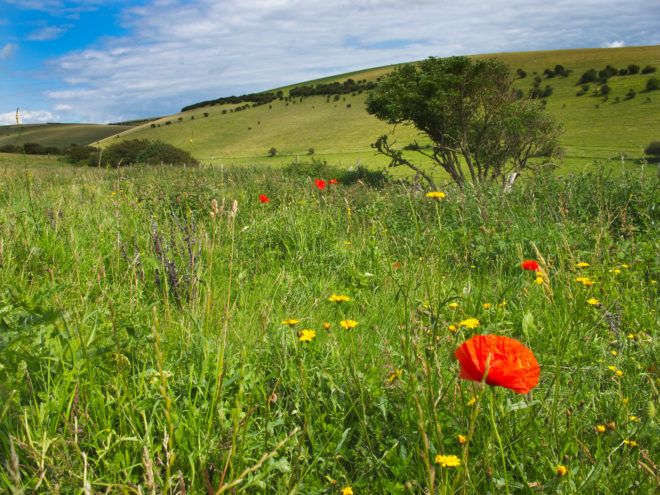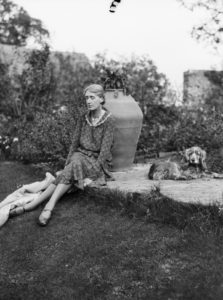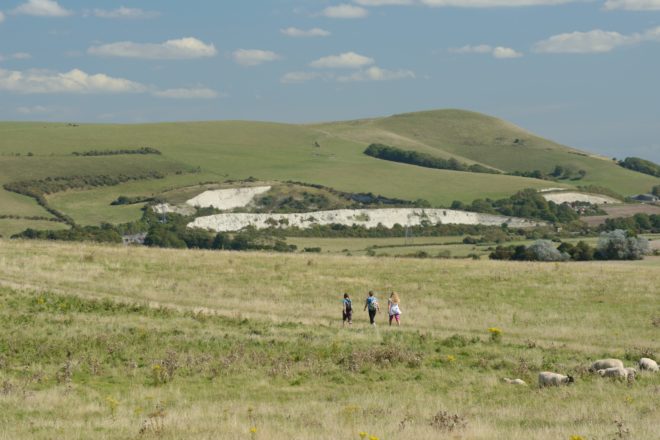‘Woolf beautifully captured the sense of freedom of open spaces’
September 7, 2021

Local writer Dr Heloise Coffey takes a look at one of Britain’s most celebrated and revolutionary authors, who found comfort as well as inspiration in walking the South Downs.
Today we’re familiar with the idea that walking and being out in nature is good for our mental as well as physical wellbeing. It’s even been given a name – ‘green therapy’ – and has been described as ‘the Natural Health Service’. The idea that nature does us good has gained official recognition with recent news that the NHS are now experimenting with ‘prescribing’ nature to supplement treatment for depression and anxiety. The importance of open spaces has been even more topical since the start of the pandemic, during which time people have flocked to the countryside in their thousands.
The South Downs National Park is the perfect place for a dose of green therapy. Home to the South Downs Way, it has 160 kms of paths wending their way past breath-taking sea views and chalk cliffs, and through grassland, meadows and wooded valleys.
Just over a century ago, writer and Bloomsbury Group member, Virginia Woolf, found that taking long walks on the Downs just south of Lewes eased the symptoms of her mental health issues. Woolf lived with what might now be diagnosed as bipolar and depression. She may not have known the name for endorphins, but she certainly seemed to understand their beneficial effects. I “walk myself calm, walk myself serene,” she wrote. Together with her husband Leonard, Virginia Woolf had bought Monk’s House in the village of Rodmell in 1919 for £700, thereafter dividing her time between the Sussex Downs and the squares in Bloomsbury, London with which she’s more commonly associated.
A keen walker from an early age, Woolf walked with friends such as Vita Sackville-West (whom she described as striding out for a walk like a general in charge of an army) but mostly walked alone. Locals got used to seeing this tall, solitary figure on the Downs, sometimes accompanied by her spaniels Sally or Pinker. She would leave Monk’s House by a gate at the end of the garden and walk out into the meadows bordering the River Ouse with views of Mount Caburn. Here, she wrote, “all of nature is to be had five minutes”. She had favourite walks along the Ouse towards Piddinghoe and delighted in discovering new ones. “I am extremely happy walking on the Downs,” she said, “I like to have space to spread my mind out in.”
Monk’s House was also a writing retreat for Woolf. It was there that she worked on some of her most famous novels. Her routine was to write in the morning and walk in the afternoon. “I slip easily from writing to reading with spaces in between of walking,” she wrote. As she walked, she would say the sentences she was working on out loud, honing and refining them as she walked. “I walk, nosing along, making up phrases,” is how she described it.

Woolf beautifully captured the sense of freedom and feeling of exhilaration that comes from being up on the wide-open spaces of chalk downland. She compared striding the crest of the Downs to taking to the air and flying. She also had a real ‘feel’ for the landscape and left some lasting descriptions of it; the golden appearance of fields in late summer as being “the colour of lions”; or the “grey hollows and gold cornfields and the first ploughed land shining white, with the gulls flickering”.
It’s been said that many things can be “solved by walking”. Although not a panacea or cure-all, walking can provide space to spread our minds out in, as Virginia Woolf so perfectly expressed it. A pleasure in its own right, it has so much to offer from the ground beneath your feet to sky above with everything else in between: the wildflowers, the birdlife, the animals, the rivers, the undulating hills. The South Downs National Park has all of this to offer, and so much more.

